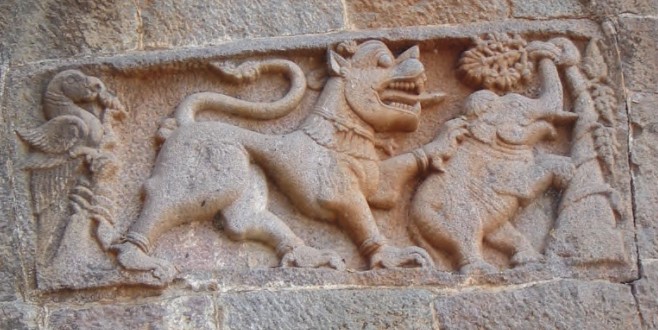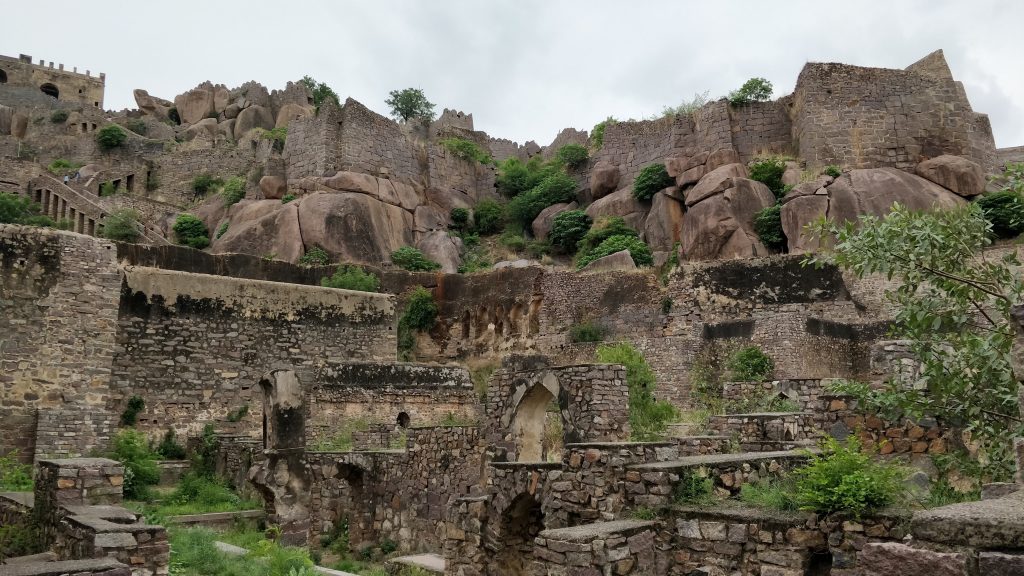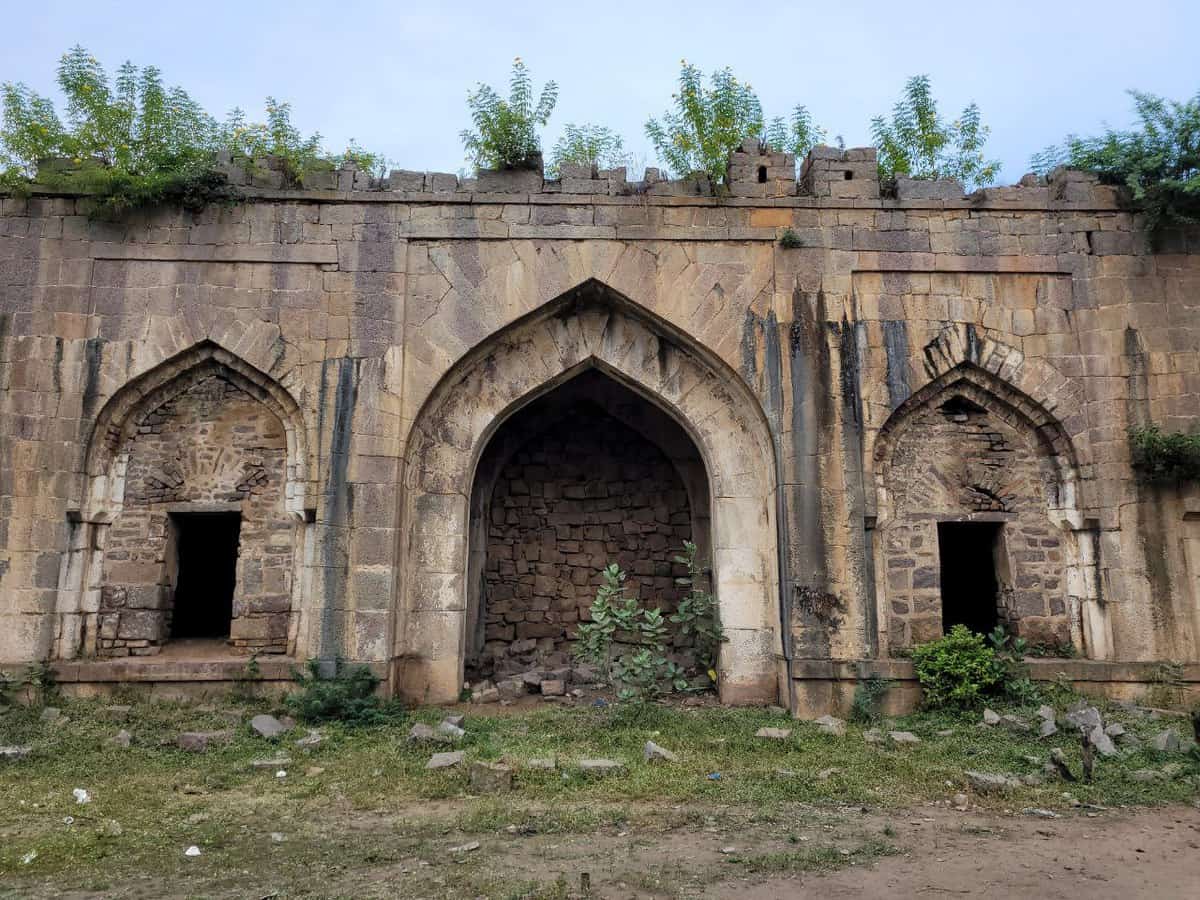Hyderabad: The Archaeological Survey of India (ASI) here is surveying the Golconda Fort’s Patancheru Darwaza. The ancient doorway, which is currently in ruins, has a part of it which the Indian Army in the area claims belong to the defence forces. A joint meeting was held along with Revenue department officials earlier during which Army officials also reportedly asked the ASI to mark the boundaries for both sides.
The Patancheru Darwaza is one of Golconda Fort’s eight gates in the historical fortification, which was built by the Qutb Shahi dynasty (151801687) before Hyderabad came into existence. It has eight gates, of which 4 are accessible fully by the public, while two are under the Indian Army fully. Another gate, the Mecca Darwaza, is manned by the army, but civilian vehicles from the Langer Houz side are allowed to pass through it to reach the main fort area.
“We recently visited the place with Mandal Revenue Officer and Defence officials. The MRO has been asked to share the details of our boundary. The army has claimed that it has 108 acres of land. The Patancheru Darwaza, the cannon top and the fort walls all belong to us. There is some open land which the army claims it is theirs, hence they requested us to have some clarity,” an ASI official told Siasat.com
The Patancheru Darwaza, is located near the Katora Houz lake in the Golconda Fort area, and falls on the way to the main entrance. It has been left to its fate as there is no protection, leading to locals throwing garbage in front of its entrance.
Hyderabad: Pathway to Baobab tree in Golconda’s Naya Qila still damaged
Interestingly, the Patancheru Darwaza’s moat still has some water in it, and usually turns into a green habitat during the monsoon. However, unlike a few years earlier, the water inside the moat is minimal now due to human interventions. The moat, along with the rest of the Golconda fort, is a remnant of the place which was a walled-city until Hyderabad was founded later in 1591 by the Qutb Shahi kings.

Unlike at other gates , where the moats have been fully filled up with mud and roads have been built over them, the Patancheru Darwaza is perhaps the last remnant of the fortification, as to how it may have been during the Qutb Shahi or Golconda period (1518-1687).
The Patancheru Darwaza, apart from still having intact bastions, also has strikingly beautiful carvings on its walls. Interestingly, these designs are elements that one can find in Hampi, the capital of the Vijayanagar empire, which was a contemporary of the Qutb Shahi dynasty and also to other Deccan sultanates. Its entrance has also unfortunately been turned into a garbage dump by locals.
“Once we complete the survey, we will also fence the area so that locals do not throw trash inside the Patancheru Darwaza,” said the ASI official.
History of Golconda Fort
The Golconda Fort’s origins are traced back to the 14th century when the Rajah of Warangal Deo Rai (under the Kakatiya Kingdom which ruled from Warangal) built a mud fort. It was taken over by the Bahmani Empire between 1358 and 1375. Later, it was developed into a full-fledged citadel by Sultan Quli who founded the Qutb Shahi kingdom in 1518 following the death of the last sovereign of Bahmani Emperor Mahmud Shah.

Sultan Quli was a commander and later governor of Tilang (Telangana), under the Bahmani Empire (1347-1518), when its second capital was at Bidar. Sultan Quli, who was originally from Hamadan in Iran, rose to the level of Governor under the Bahmani Empire in the early 16th century. At this point in time, he was given the fort, around which he began developing a walled city. It eventually came to be called Golconda Fort (a name derived from Telugu Golla-conda, or shepherds hill).
The fort has 87 bastions, and eight gates, of which a few are not accessible to the general public as they are under the army’s control. It is believed to be one of the Deccan’s most impregnable forts and had kept Mughal emperor Aurangzeb’s army at bay for eight months until he succeeded and conquered Hyderabad in 1687.
Hyderabad was founded in the year 1591 by Mohd. Quli Qutb Shah, the grandson of Sultan Quli, with the Charminar being the city’s foundation.







